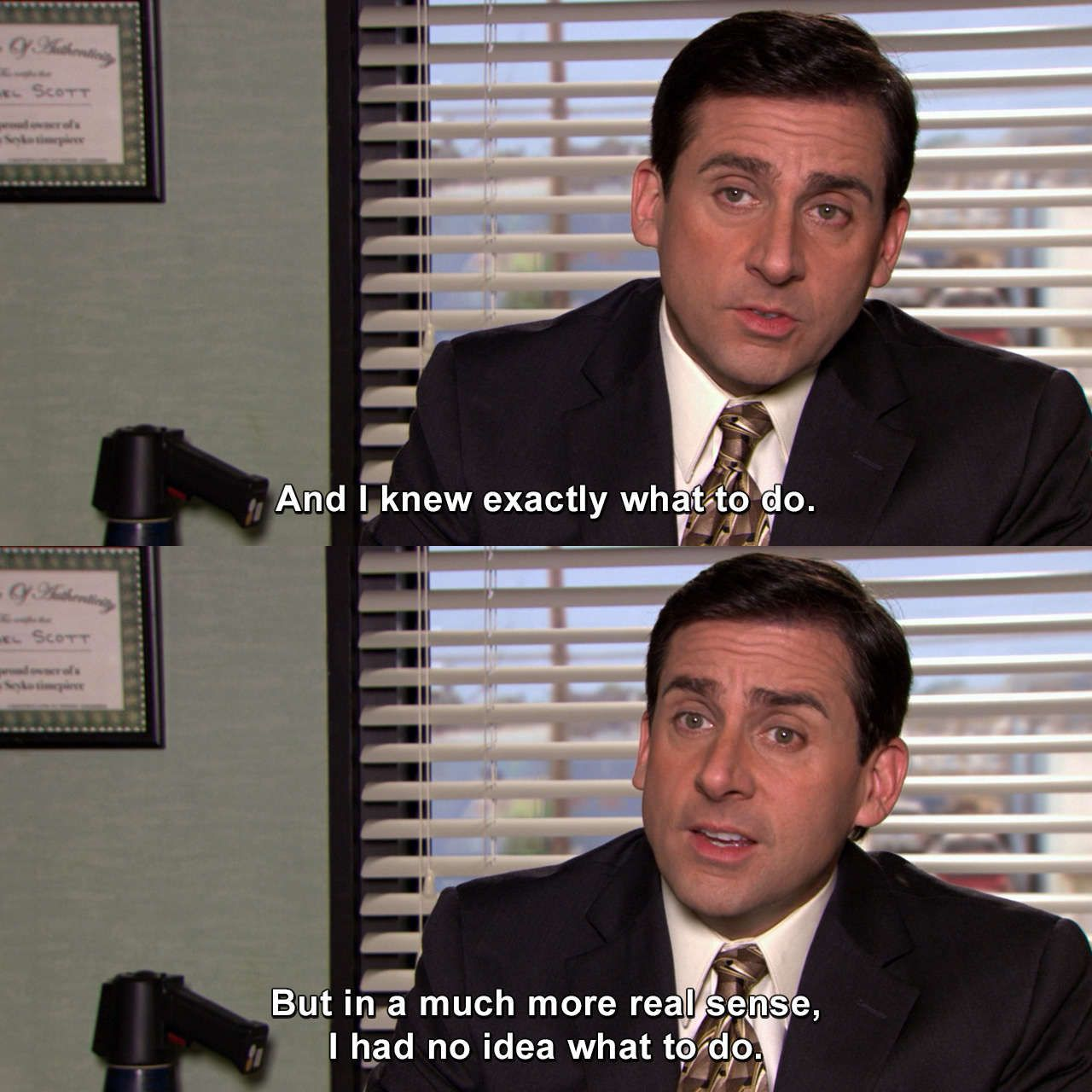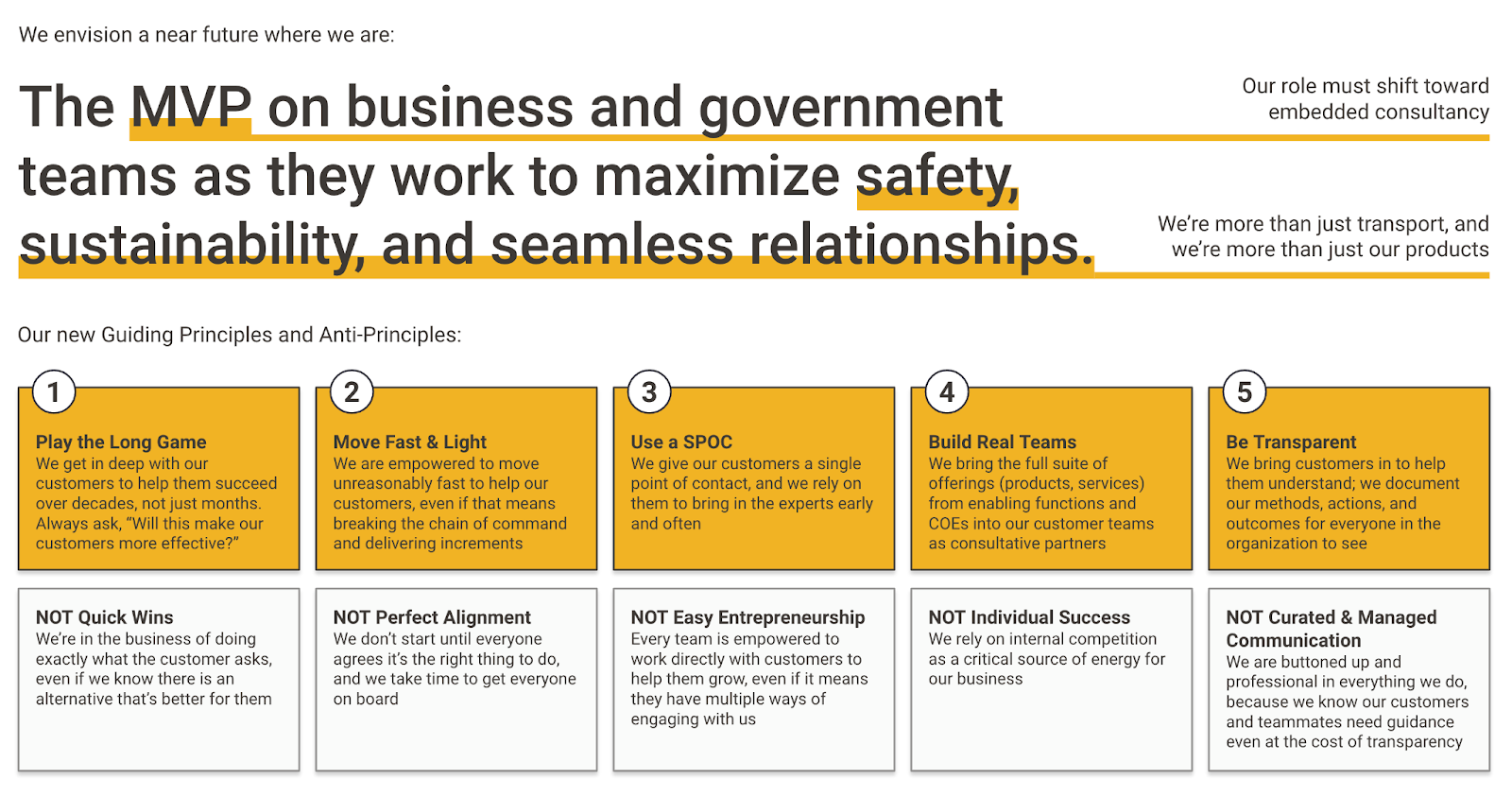Mission, Values, Principles: How to make them *work*
Yours should tell employees enough about where you’re going and what you want to achieve in the future that they can judge what working there will be like moving forward.

ICYMI: We believe that Marketing should help lead internal culture work. Full stop.

While partnership with the People team is hugely important here (duh), marketers have specific capabilities that make them great at internal culture change.
Their ability to navigate complex systems and drive culture coupled with their proximity to the consumer make them better equipped than any other member of the C-Suite to inspire and lead internal change.
Okay, so you’re onboard…now what?

Change is a journey, and we strongly recommend that you have an idea of what your north star is before you take the first step.
The North Star = a set of defined Mission, Values and Principles (MVP) that guide the organization.
But wait! Don’t just go about it willy-nilly. There are such things as terrible missions, values, etc., but with a few watch-outs, you too can set the right North Star for your team.
A good set of mission, values, and principles is:
- Differentiating
- Aspirational and future-oriented
- Actionable
- Memorable
- Reinforces your external, customer-facing brand
A bad set of mission, values, and principles is:
- Generic and broad – table stakes
- Reflects the current state
- Overly complex
- Too operational or focused on activity rather than capability
Your MVP should tell employees enough about where you’re going and what you want to achieve in the future that they can somewhat judge what working there will be like moving forward.
Remember this: it’s okay, and even good, if current employees look at your new mission and values and no longer feel like your organization is the right place for them.
Show me an example
Recently, we partnered with a large organization to set their vision for a new group.
We worked the vision first, defining an aspiration that felt possible but also not necessarily true today. Next we went through rounds with the leadership team to define the principles. Something to note: we also introduced anti-principles (aka the polar opposite) for each of the agreed upon principle (hint: you SHOULD be able to articulate anti-principles easily). Writing them down helps you better define your principles by clearly calling out what they’re not. You can see examples in the image below.

What if I already have a defined mission and values?
Say you’ve done the good work and have the words and slides to show for it. We would still challenge you to run it through the Good Mission Checklist (™ pending):
- Differentiating (not simply table stakes)
- Aspirational and drives behavior change (future oriented)
- Actionable (statements with verbs)
- Memorable (short and specific)
- Reinforces your external, customer-facing brand
If there’s a gap in one or more areas, you know what to do.
And once your organizational MVP are refreshed, it’s time to make sure they’re actively followed. A good place to start is having managers model the behaviors that reflect the MVP so their teams can be inspired and learn to do the same.
We also strongly encourage pulse surveys here: “I’m inspired and motivated by our MVP.” “Our leaders embody our MVP.” “I stay here because of our MVP.” “I see how my day-to-day work is connected to our MVP.” etc etc.
Wrapping up
Change is overwhelming and most times it feels like an impossible hill to climb. However, with Marketers leading the way and a clear direction defined and shared, you can start on the path to true transformation.






